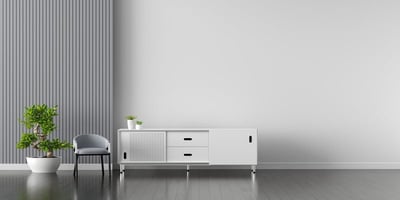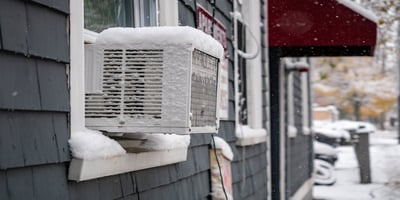How to Hide an Air Conditioner Unit Outside? Tips and Solutions to Camouflage
Key Takeaways
- Concealing your outdoor AC unit enhances curb appeal while protecting it from weather damage and reducing operational noise.
- Always maintain 2-3 feet of clearance around the unit to ensure proper airflow and prevent overheating.
- Built structures, strategic planting, and decorative screens offer practical solutions to hide an AC unit outside without compromising functionality.
- Regular access for maintenance is non-negotiable—design any cover with removable panels or easy entry points.
- Budget-friendly options like repurposed pallets, lattice panels, and strategic plant placement work just as well as custom enclosures.
- Never completely seal an AC unit—it needs ventilation to operate efficiently and avoid costly repairs.
Your outdoor AC unit keeps you comfortable during sweltering summer days, but that bulky metal box can clash with your outdoor design and drag down your home's curb appeal. Learning how to hide a window air conditioner outside or conceal any outdoor unit is easier than you think.
Why Hide Your Outdoor Air Conditioner Unit?
Concealing your AC unit serves multiple purposes beyond aesthetics.
Protection from the elements - Exposing your AC unit to harsh weather conditions like rain, snow, and direct sunlight can accelerate wear and tear, leading to potential damage and reduced efficiency of cooling systems. Concealment provides an additional layer of protection, prolonging the lifespan of your unit and minimizing maintenance costs.
Noise reduction - While modern air conditioners are designed to operate quietly, they can still produce some level of noise that may be disruptive, especially in outdoor living areas. Concealing the air conditioning unit itself with strategic landscaping or structures can help mitigate noise pollution, allowing you to better enjoy your outdoor space in peace.
Enhanced privacy - When you hide ac unit with plants or decorative screens, you're creating a more intimate outdoor environment. Obscuring the view from neighbors contributes to greater seclusion for relaxation and enjoyment.
Essential Tips Before You Hide Your AC Unit
Check Manufacturer Guidelines First - Most units need 2-3 feet of open space on all sides and at least 5 feet above. Violating these specs can void your warranty and cause the compressor to overheat.
Prioritize Airflow Above Everything - Restrict airflow, and you're forcing the system to work harder. Any decorative outdoor air conditioner cover you choose must allow air to circulate freely. Think breathable, not sealed.
Plan for Maintenance Access - HVAC technicians need easy access for annual tune-ups and emergency repairs. Build in hinged panels, removable sections, or adequate working space around the unit.
Mind the Plant Placement - Keep shrubs at least 2-3 feet away from the unit. Closer than that, and falling leaves can clog the condenser fins. Choose evergreen shrubs that won't drop excessive debris.
Consider Seasonal Changes - Lush greenery planted in spring might die back in winter. Heavy snow might accumulate on a solid roof cover and damage internal components.
Don't Forget Ground Drainage - AC units produce condensation. Your concealment structure shouldn't create a puddle-prone spot. Ensure proper drainage with gravel or raised platforms.
 Creative Ideas to Hide Your AC Unit Outside
Creative Ideas to Hide Your AC Unit Outside
Built Structures and Enclosures
Wooden Lattice Screen - Build a three-sided frame using cedar or pressure-treated lumber and attach lattice panels. The open design allows excellent ventilation while obscuring the unit from view. Apply weatherproof sealant or paint to match your home's trim, or let climbing plants like clematis weave through for natural beauty. This approach gives you multiple ideas to hide an AC unit outside.
Custom-Built Wooden Enclosure - Select durable, weather-resistant materials such as cedar wood or galvanized metal. Incorporate ventilation slats spaced 2-3 inches apart and add hinged panels for easy access during maintenance. Many homeowners add storage space for garden tools, turning the enclosure into a multi-purpose structure.
Decorative Metal Screens - Powder-coated aluminum or steel screens bring contemporary aesthetics to AC concealment. These panels come in various patterns and require zero maintenance. Simply position them around your unit using ground stakes or mounting brackets, leaving adequate space for airflow.
Mini Shed or Lean-To - Design a small shed with sufficient space to accommodate your AC unit and garden supplies. Construct it using weather-resistant materials with a hinged door for convenient access. Add ventilation openings to ensure proper airflow and prevent heat buildup inside.
Natural Concealment Solutions
Strategic Shrub Placement - Select dense evergreen shrubs like boxwood, juniper, or arborvitae. Plant them in a U-shape around the unit, maintaining that crucial 2-3 foot clearance. This method to hide AC unit with plants works beautifully and provides year-round coverage.
Ornamental Grass Border - Plant tall grasses like maiden grass or feather reed grass in strategic clusters. The natural movement creates visual interest while ensuring proper airflow through the open planting style.
Trellis and Vine System - Install a trellis or lattice panel adjacent to the AC unit for climbing plants. Select fast-growing vines such as ivy, jasmine, or clematis positioned 3-4 feet from your unit. Regularly prune to ensure vines don't wander onto the equipment.
Decorative Rock Garden - Use various rocks, stones, and pebbles in different shapes and colors to add texture. Incorporate drought-tolerant plants or succulents among the rocks to soften the appearance.
Functional Covers and Decorative Elements
Decorative Outdoor Furniture Cover - Select outdoor furniture pieces like benches or storage chests made from weather-resistant materials. Position strategically to conceal the unit while allowing proper airflow. Choose furniture with hinged tops for easy access during maintenance.
Decorative Fence or Gate System - Choose materials like wrought iron, aluminum, or wood that are durable and weather-resistant. Ensure the fence is tall enough to conceal the unit while allowing ventilation. Add embellishments like decorative scrollwork to enhance visual appeal.
Privacy Screens and Panels - Freestanding privacy screens offer instant concealment with zero installation hassle. Position them to block views from your most-used outdoor spaces while leaving other sides open for airflow.
Outdoor Artwork or Sculptures - Select pieces that draw attention away from the AC unit and serve as focal points. Position strategically to divert attention without obstructing airflow. Use spotlights to highlight the artwork and create visual interest.
Budget-Friendly Options
Repurposed Pallet Fence - Free or cheap wooden pallets can be repurposed to construct a simple enclosure. Stand pallets on their sides, secure them with ground stakes, sand rough edges, and enhance with paint.
Simple Fabric Screen - Design a removable fabric cover using outdoor canvas and attach it with bungee cords for easy installation. This works great for hide window air conditioner outside or situations requiring a temporary solution. Take it down during winter or for maintenance with minimal fuss.
Budget Planting Options - Plant low-cost, fast-growing shrubs around the AC unit. Choose affordable perennial flowers to fill in gaps and add color. Incorporate budget-friendly mulch or gravel as ground cover and install decorative stepping stones to create pathways.
Reusing Materials - Repurpose old wooden crates, leftover lumber, or salvaged materials to construct enclosures. Old wooden shutters from thrift stores make charming AC screens. Connect 2-4 panels using hinges for a shabby-chic enclosure with built-in ventilation.
 Maintenance and Accessibility Considerations
Maintenance and Accessibility Considerations
Ensuring Proper Airflow - Regularly clear debris, foliage, or obstructions around the AC unit. Prune nearby plants to prevent them from encroaching on the unit and obstructing ventilation. Monitor the space to ensure sufficient clearance for proper airflow.
Regular Maintenance Tips - Schedule annual professional maintenance checks to inspect and clean components. Replace or clean air filters regularly according to manufacturer guidelines. Inspect and clean condenser coils to remove dirt and debris buildup. Check refrigerant levels and inspect for leaks.
Ensuring Easy Access - Design structures with removable panels or access points for easy maintenance. Install hinges on enclosures to facilitate quick opening for servicing. Keep pathways clear leading to the AC unit to allow service technicians easy access.
Final Thoughts
Concealing your outdoor AC unit doesn't require expensive contractors or complex construction projects. The most successful approaches combine aesthetics with functionality—creating solutions that look great while keeping your system running efficiently for years to come. Start with small, reversible changes if you're testing different options, and remember that proper ventilation and maintenance access should never be compromised for appearance. Your AC unit might not win design awards, but with creativity and careful planning, it can blend seamlessly into your outdoor living space rather than dominating it.
FAQ
What's the biggest mistake people make when hiding their AC unit?
Blocking airflow ranks as the number one error. Homeowners forget that their unit needs breathing room. Placing solid barriers too close or building enclosures without adequate ventilation forces the system to work harder and can lead to expensive breakdowns. Always maintain manufacturer-recommended clearances—typically 2-3 feet on all sides.
Can I completely cover my air conditioner when it's not in use?
Yes, but with caveats. During the off-season, use a weatherproof AC cover to protect against debris and moisture. However, never cover a unit while it's running. If you're using a cover, choose breathable materials that prevent moisture buildup. Trapped moisture can lead to mold growth and rust on internal components.
Do I need professional help, or is this a DIY project?
Most concealment projects fall within typical DIY skill levels. Building a simple lattice screen or installing privacy panels requires basic tools and moderate ability. However, consider hiring professionals for complex built structures, electrical work, or if your project involves digging near utility lines.
Will hiding my AC unit affect its warranty?
It depends on how you hide air conditioner systems. Manufacturer warranties typically remain valid as long as you follow installation and clearance guidelines. If you restrict airflow and cause overheating, or if concealment prevents proper maintenance, that could void warranty coverage. Review your warranty documents before starting any project.
What plants work best for hiding an AC unit naturally?
Choose heat-tolerant, low-maintenance plants that won't shed excessive debris. Evergreen shrubs like boxwood, dwarf Alberta spruce, and Japanese yew provide year-round screening. Ornamental grasses like feather reed grass or maiden grass offer height without density issues. For flowering options, consider heat-hardy roses, Russian sage, or daylilies. Always plant 2-3 feet away to maintain clearance.


































.jpg)

.png?height=200&name=image_2023-11-20_10-40-17%20(1).png)

.jpg?height=200&name=photo_2024-12-20_20-22-47%20(1).jpg)